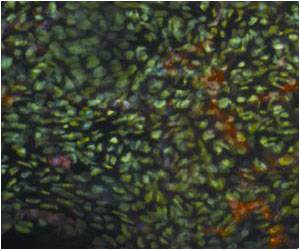The role of a protein called Mof in preserving the 'stem-ness' of stem cells has been discovered by scientists.

Dou, an associate professor of pathology and biological chemistry, has studied Mof for several years, puzzling over the intricacies of its role in stem cell biology.
She and her team have zeroed in on the factors that add temporary tags to DNA when it's coiled around tiny spools called histones. In order to read their DNA, cells have to unwind it a bit from those spools, allowing the gene-reading mechanisms to get access to the genetic code and transcribe it. The temporary tags added by Mof act as tiny beacons, guiding the "reader" mechanism to the right place.
"Simply put, Mof regulates the core transcription mechanism – without it you can't be a stem cell," says Dou. "There are many such proteins, called histone acetyltransferases, in cells – but only MOF is important in undifferentiated cells."
Dou and her team also have published on another protein involved in DNA transcription, called WDR5, that places tags that are important during transcription. But Mof appears to control the process that actually allows cells to determine which genes it wants to read – a crucial function for stem-ness. "Without Mof, embryonic stem cells lost their self-renewal capability and started to differentiate," she explains.
The new findings may have particular importance for work on induced pluripotent stem cells – the kind of stem cells that don't come from an embryo, but are made from "adult" tissue.
Advertisement
Dou says that further work on Mof might make it possible to stop using that potentially harmful approach. But further research will be needed.
Advertisement
Once a stem cell starts to differentiate, or become a certain specialized type of cell, parts of the DNA close up and aren't as accessible. Many scientific teams have studied this "selective silencing" and the factors that cause stem cells to start specializing by reading only certain genes. But few have looked at the factors that facilitate broad-range DNA transcription to preserve stem-ness.
"Mof marks the areas that need to stay open and maintains the potential to become anything," Dou explains. Its crucial role in many species is hinted at by the fact that the gene to make Mof has the same sequence in fruit flies and mice.
"If you think about stem cell biology, the self-renewal is one aspect that makes stem cells unique and powerful, and the differentiation is another," says Dou. "People have looked a lot at differentiation to make cells useful for therapy in the future – but the stem cell itself is actually pretty fascinating. So far, Mof is the only histone acetyltransferase found to support the stemness of embryonic stem cells."
Source-Eurekalert













